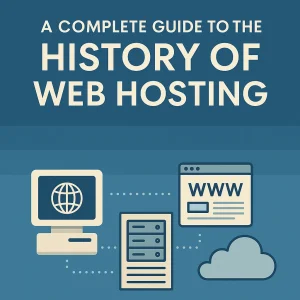 Proximity is preferable when it comes to so many aspects of operating a business or a venture. There are benefits when you or one of the resources you need for your operations is close by and more readily accessible because of it. This can be in reference to tangible resources, but it can also be referring to ones that you’re not able to put your hands on. Web hosting is an infinitely valuable resource for any business or venture these days given the predominant nature of the Web when it comes to generating business and clientele.
Proximity is preferable when it comes to so many aspects of operating a business or a venture. There are benefits when you or one of the resources you need for your operations is close by and more readily accessible because of it. This can be in reference to tangible resources, but it can also be referring to ones that you’re not able to put your hands on. Web hosting is an infinitely valuable resource for any business or venture these days given the predominant nature of the Web when it comes to generating business and clientele.
As you’d expect we’re talking about Linux web hosting, and if you are able to have your web host’s servers physically near to you then there are a number of significant benefits that come with that. It’s the reason that the best Canadian web hosting providers will have more than one physical data center, and for us here at 4GoodHosting it’s why we established ones in Vancouver and Toronto many years ago.
Sites hosted through us will have one of them reasonably close depending on whether they’re found on the East or West side of what is a very large and very wide country. Whether that’s for the ultimate Linux hosting with cPanel Vancouver or for the same type of hosting in Halifax or St. John’s the benefits are extended the same way. Uptime guarantees are going to be front and center with all of this, but what fewer people will know is that server proximity factors into SEO too.
We don’t need to explain how SEO is everything if you are in business online and having yourself be clearly and prominently visible in front of people who may be looking for a retailer or service provider like you online. Server location certainly does play a role in website performance and SEO, and no one should be assuming that these proximity effects won’t also be benefiting Linux shared hosting plan members. You don’t need to be on a VPS to enjoy server proximity benefits.
Geographical Distance
Server location is a term for the physical location of the data center or server where your website’s files and data are stored. Where that location is can impact various aspects of website performance based on where your site has its IP address. The geographical distance between the server and the website users will factor into loading times, latency, and the overall user experience.
Server location may also have relevance for website security, legal compliances, plus how much you’re going to need to pay for Linux shared hosting Canada. Web hosting customers will be best served when choosing a Canadian web hosting provider that has a server location relatively close to them so that website visitors can have fast and reliable access to the website’s content.
The server’s hardware componentry will play a role in superior performance attributes when the server is comparatively close by, and components that are especially integral to that include:
- CPU
- Hard drives
- OS (Linux, Windows, Unix, MacOS) plus OS distributions like Unix, and Ubuntu
- Memory
- Storage
- Connectivity Adapters
- Power Supply Units
- Server Application
Closer is Better
Linux web hosting tends to be the best performer when it comes to web hosting operating systems, and for any type of site that’s not a Windows-based site you’re probably going to have the best page load speeds right out of the box. The hosting server’s location affects the response time of the server, and the advantage of having servers closer to your target audience is that they offer faster response times and provide a smoother and more satisfying browsing experience.
Websites that have more of a global audience need to be paying especial attention here, as they are the ones who are going to have more to lose if site visitors aren’t experiencing what they envisioned when they decided to visit the website. With all this understood it makes a lot of sense to explore how distance can impact speed by comparing the delay in data transfer in two geographical locations that have a significant distance between them.
Research done a year and some back at Harvard University traced the requested route between servers in Asia and their primary servers in Boston, Massachusetts in the northeastern United States. What was determined supported much of what we’ve been saying about Ultimate Linux hosting with cPanel Vancouver or Linux hosting anywhere when server databases are not located far away.
When a user is comparatively closer to the server location, their request are handled with fewer data ‘hops’ than would be needed if they were further away. This skipping is the basics of how the interconnectedness of location and speed work for better website performance and uptime guarantees.
Latency & Website Speed
The distance between the server and website visitors is a decisive factor in how much time it data takes to travel. This part of it is fairly easy to understand, as fiber optic cables are no different from a cable of any sort with the way they serve as a conduit with the signal passing through them. So it makes equal sense that longer distances mean more latency and that website will load more slowly because of it.
Having the server be closer to where the bulk of your visitors or audience is coming from reduces latency, and this promotes quicker page loading speeds, enhanced user experience, and the possibility of better search engine rankings too. Latency in forex trading is measured in milliseconds, and even just a matter of milliseconds can make quite a difference in whether both those metrics can be improved to the extent site webmasters will be hoping to see.
Achieving minimal latency much more possible when data servers are not located far away, and as mentioned having a site hosted with Linux shared hosting doesn’t mean you’re any less positioned to be able to gain these same benefits for your website when the host has multiple physical data centers that put one close to where you are.
Content Delivery
This advantageousness goes straight into overdrive when we bring content delivery into the picture for websites that are utilizing a CDN and see the need to have better website performance through their web host. The connection between server location and content delivery is profound.
When servers are strategically placed in different regions then utilizing a Content Delivery Network (CDN) is essential and with a close-by server those users stand to experience reduced latency, improved website performance, and way faster loading times that are consistent regardless of the visitor’s location.
We can explain more about how server location contributes to your SEO rankings here too. Everyone knows that website bounce rates go down considerably when page-loading speeds are optimized. Any one add to the site’s bounce rate may also be referred to as a single-page session – when a visitor lands on a website page but quicky leaves without placing further requests.
Of course there will be an increase in bounce rates for websites with slow loading times and this applies to sites in Linux shared hosting in Canada where the site has too much traffic in order for the server to be able to handle it. Research has indicated that a page load time increase of 1 to 3 seconds can cause bounce rates to go up more than 30% and that has to be a cause for concern for any webmaster working for a site that is utilized for ecommerce.
Page speed also contributes extensively to overall user experience, with sites that load faster promoting longer dwell times – which is the time users spend on a web page. Plus faster-loading websites are more accessible to search engine crawlers as they discover updated content, including new web pages, websites, or modifications to existing content.
They go over sites regularly to ensure proper indexing and ranking and the connection between your site speed, server location, and SEO rankings is connected to how favorably the crawlers regard your site based on different measurables. Search engines allow the selection of target regions, enabling geo-targeting and using region-specific keywords. A well-suited server hosting location can substantially enhance your website’s loading speed.
Determining Best Location
We’ll always promote Linux web hosting as the best choice independent of factors, but where a server is located is going to factor into site performance no matter what type of web hosting OS is behind it. You’re not going to choose a web hosting provider in Canada based on where their servers are located, but you will be choosing them based on the performance that stems in part from that aspect of their operations.
But you may be able to make your decision based on information that can be connected to that. First and foremost in that regard is in identifying the primary geographic regions of your main audience. Simply, a website that primarily serves users in the US will be best with a provider that has a data center located in a major United States city.
Another consideration will be if you’re using a content delivery network (CDN) to distribute your website’s content to various server locations globally. People operating a global e-commerce site will find the service of a CDN to be indispensably valuable with delivering content from servers in the United States, Asia, and Europe, and knowing that quicker loading speeds are likely for users in each region but no matter where that is.
What is common here are server response time tests and then doing audits of the site to determine scalability and redundancy options.
Search Engines & Server Location Interpretation
Search engines have specific criteria for ranking websites, and as most people will know this criteria is never in final form. Their search algorithms evaluate numerous factors, among them a website’s relevance, usability, the expertise of information sources, location, and user settings. The Ultimate Linux hosting with cPanel Vancouver is going to have your site best situated for this review, and in general it’s fair to say that having a Linux webhost OS behind your site is the best choice for website SEO based on web hosting.
The next point we should mention here in connection to server location and performance / SEO is the role of geo-targeting. Search engines like Google and Bing have adopted a globalized approach that includes this type of targeting, and it is good in the way it allows businesses with servers located overseas utilize webmaster tools to specify their target country.
Search engines will also consider other factors like the server’s IP address, backlinks, and content for ranking purposes. Google now prioritizes ccTLDs (country code top-level domains) over server location in search results and while site relevance is king the server’s location remains a pivotal influence factor for site speed and response times, which as we know significantly impact user experience.
Geo-Targeting
Geo-targeting is also called local pay-per-click (PPC), and with it the aim is always to deliver content to users based on where they are ‘seen’ to be. It makes marketers much more capable with providing targeted ads and personalized content to individuals within a specified geographical area. Geo-targeting makes it possible to make determinations based on a consumer’s current or past location to deliver the most relevant message to the right individual and in a timely manner. Geo-targeting ensures that advertisements or promotions align with a consumer’s location, reducing unproductive clicks and impressions and enabling a more efficient allocation of marketing resources.
It's worth mentioning the way a Domain Name System (DNS) can improve or take away from website SEO. The DNS process occurs in advance of a website loading in a visitor’s browser, and the resolution time may enhance or diminish the overall user experience. Find yourself a dependable DNS provider and you will be set to avoid the global average of an approximately 20 milliseconds delay for webpages to load. This choice significantly influences the speed and responsiveness of the website for users.
But on the other side of that DNS outages can harm a site’s SEO. Postponed indexing of new pages may adversely impact your site’s availability and potentially detract from its search engine ranking.
To address this risk a DNS provider can offer multiple points of presence (PoPs) for speedier and more expansive setup of name servers. By shortening the route between them and the name servers the page load speeds enjoyed by visitors are increased. Having 30 or more PoPs is far superior to just a few, and increasingly this number is something of a standard for web hosting providers that can offer the best DNS protection with Linux web hosting.
The way you proceed with a DNS migration is something you’ll want to consider in all of this too. Problems may arise if the TTL values of the previous DNS records are too high and these DNS records may persist in the DNS caches of recursive name servers for an extended period.
In response to that you need to be very much on top of you network latency metrics, and so what goes into that? Continue reading.
Latency Measurement with Ping & Traceroute
Ping
Ping is a commonly used latency assessment tool compatible with most operating systems. It calculates the round-trip time (RTT) between your personal computer and the specific destination you define, choosing from a domain or an IP address. RTT corresponds to the duration it takes for the ping packet to reach its destination and then return with the response. The results then provide insights into the overall delay in receiving a response from servers, PCs, routers, or internet sites.
Traceroute
The Traceroute command is a network diagnostic tool for tracing the route that packets take from the source to a specified destination, and whether or not that’s the most efficient path for the movement given how that factors into site performance and SEO. It displays the IP addresses of the routers or servers (hops) along the path and the time it takes for the packets to reach each hop. It’s an excellent tool for measuring network connectivity issues and identify latency or routing problems.
Conclusion
Server location will be a major contributor to whether or not website performance and site-infrastructure SEO is what webhost customers expect to have. By having a server hosted near the target audience the site is likely to have faster loading times and an enhanced user experience. Where a host chooses to locate a server will also impact network traffic routes and can significantly affect website speed and connectivity.
Linux shared web hosting is often best when there is a need for a mix of affordability and reliability with site performance and the chosen provider has a data center that is suitably close to the location of the individual and where they’re operating the website from.














